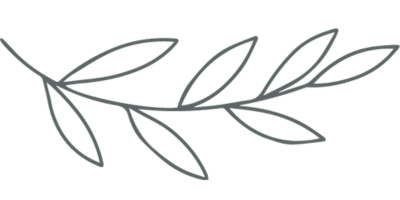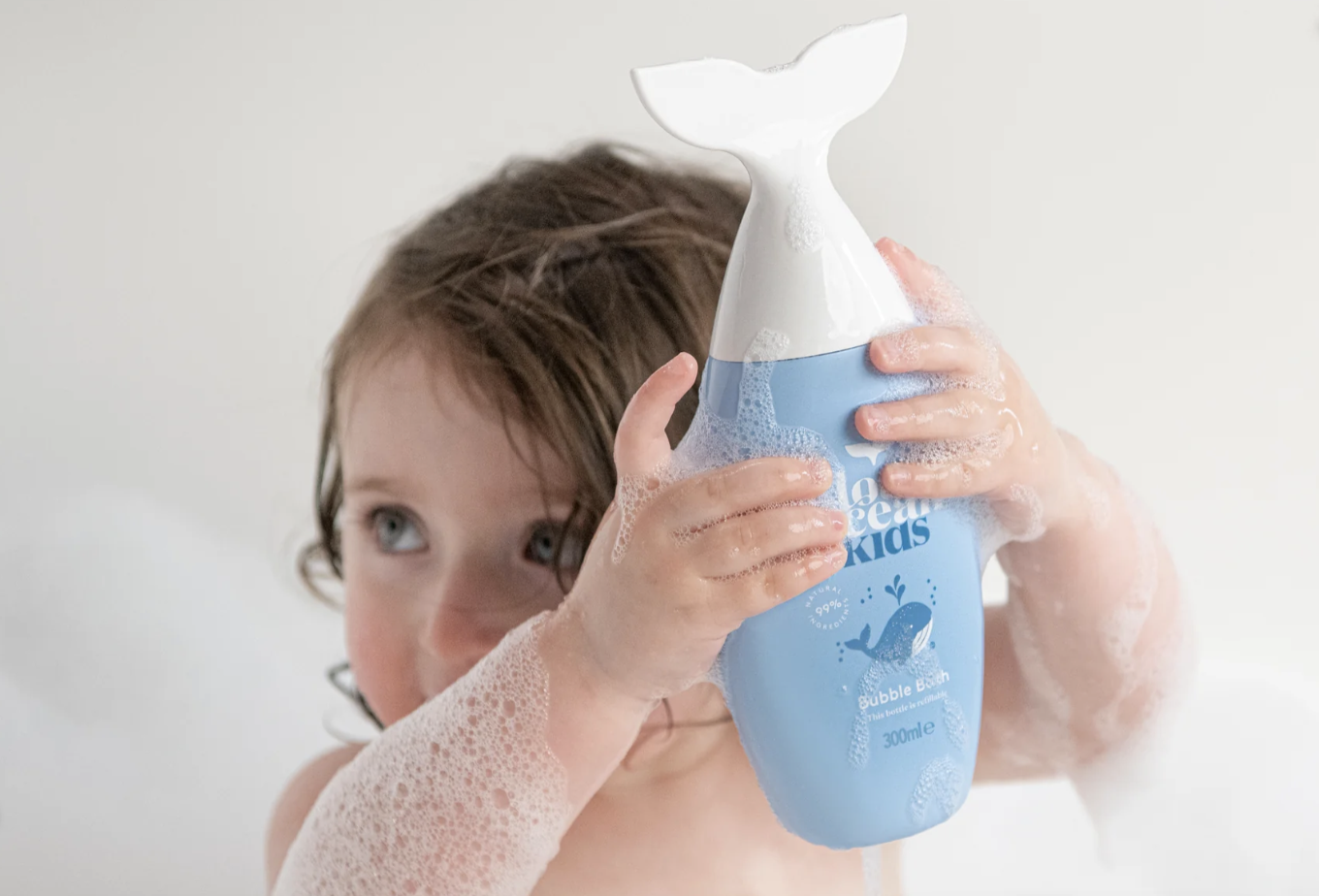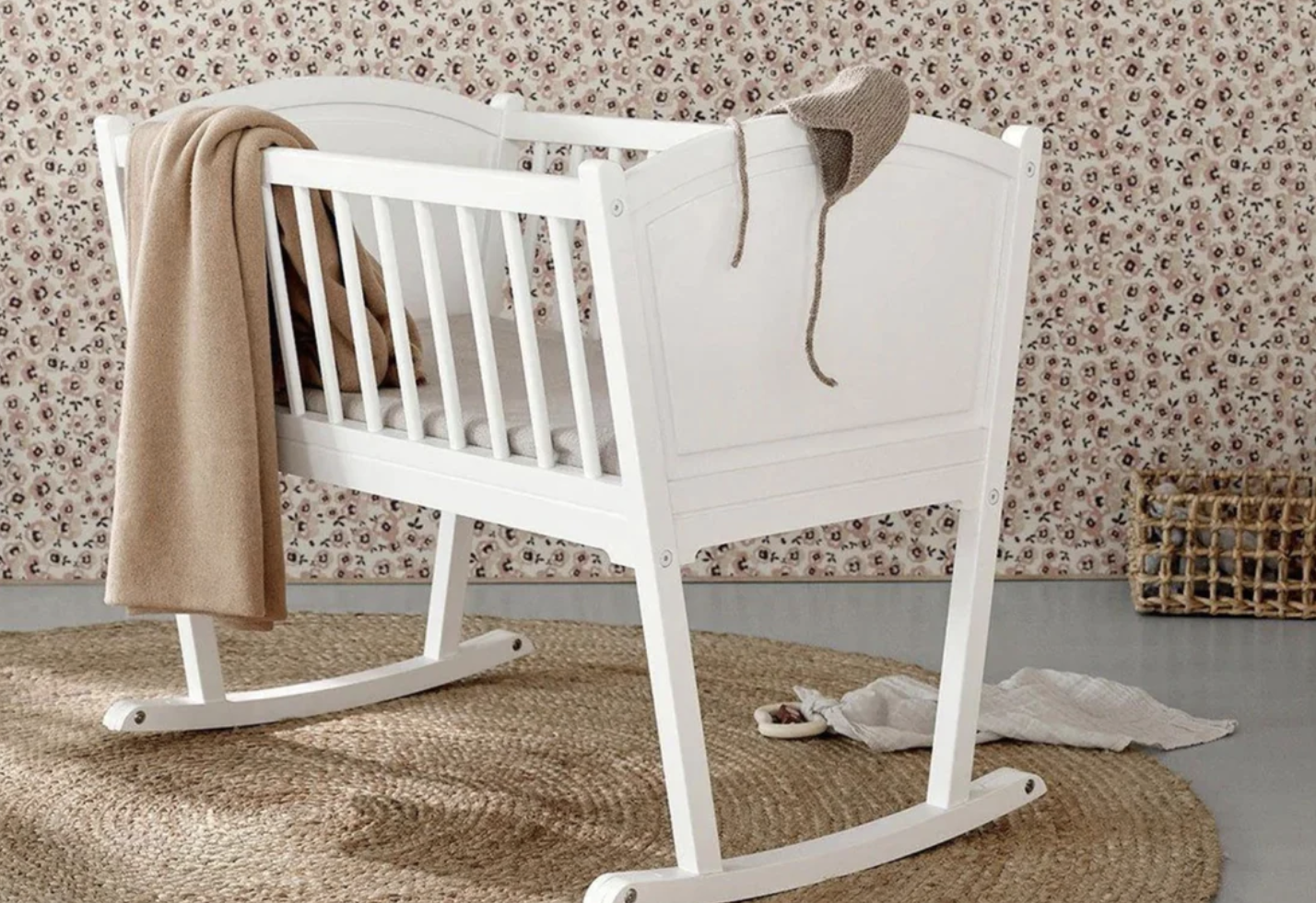Green parenting: how to raise an eco-friendly baby
It’s often the imminent arrival of a precious little person into our lives that gets us thinking about the world we want our children to grow up in. Luckily, there is so much we can do as parents nowadays to minimise the impact of child-rearing that benefits not just the planet but our babies too. Our founder, Lucy, a mum of two, works with new parents to help them create a calm and healthy environment for their new arrivals. Here are some of her top tips for raising an eco-friendly baby.
At Green Salon, we only work with brands that we have checked against our 70+ sustainability criteria to make sure they are as green - and as gentle to us and our children - as they say they are. We have an affiliate link with some of these brands to help fund our research. These are indicated with a *
If you’re about to welcome a little person into your life, you will have plenty on your mind already. So the thought of reusable nappies may just tip you over the edge. I hear you. Giving birth can feel stressful enough without heaping judgement on your own head about the impact of baby paraphenalia.
Becoming a new parent is about finding what works for you and your baby, and one way we can do that is by lowering the tempo of expectations and adopting what one of the grandfather’s of child psychology, Donald Winnicott, describes as the mindset of the “good enough mother”.
So what approach can the “good enough” parent take to raising their child in a mindful and planet-positive way?
Trust your instincts
We are bombarded nowadays with advice on baby-raising from sleep schedules to breast-feeding. It makes sense: raising a child is not something we train for and it can be comforting to have a manual to hand. After all, there’s lots to be learned from those who’ve been there before. But don’t forget to check in and listen to your intuition. We’ve (obviously) been having babies since the dawn of humanity and there’s a lot of wisdom encoded in our bodies. Often we just need to ask ourselves what to do.
Creating a healthy environment
It’s human instinct to want to keep our babies safe. Even a whisper of the word “toxin” can feel utterly terrifying. So there’s a balance to be had when talking about synthetic chemicals in baby products between alarming parents and raising awareness.
While recent research suggests babies are more sensitive to synthetic chemicals in many common household products - including baby ones - it’s important to keep this in perspective. All man-made chemicals are regulated in the UK and the trace amount in these products are not going to make our babies sick. The problem comes from the repetitive use of lots of these different household products and something known as “bioaccumulation”.
We are now learning these chemicals - such as parabens, triclosans and phthalates - contain endocrine disruptors that build up not just in our waterways but also, over time, in the human body and can affect our fertility. In recent years, phthalates have also been linked to behavioural issues in children. So the common sense approach is to use fewer of them.
Love Ocean Kids replaces synthetic chemicals with seaweed extract and is stocked by Eco-Homemaker*
The gentlest baby products
Luckily, as the research is evolving so our baby products. Over a decade ago, when I became a mum, it was much harder to find baby products that used less - or even no - synthetic chemicals. Almost everyone used Sudocreme and Johnson’s No More Tears baby shampoo, both of which contain man-made petrochemicals.
Since then, more and more baby brands have grown up and have been replaced by chemicals with natural and often organic alternatives. Because natural and organic does not automatically mean better - or even gentler - it’s worth going to stockists that have done some research. Brands like Eco-Homemaker*, which was set up in 2021 by a couple who wanted to raise their children free from synthetic chemicals, only stock products they’ve properly researched and then tested on their two kids. Our two children know all about this having been guinea pigs for the past 5 years for the green brands we analyse for the Green Salon Directory.
Even a couple of years ago, gentle baby brands cost significantly more than regular brands but that’s shifting as more and more brands come on to the market. My advice is to avoid buying lots of cheaper baby moisturisers, soaps and shampoos and opt for fewer nature-based products. Babies skin is pretty self-regulating and so the less intervention the better. The National Eczema Society advises not bathing your baby every evening as the water and soaps remove their skin’s natural oils, drying it out and increasing the likelihood of eczema.
Baby furniture and all those accessories
Over the past few decades, synthetic chemicals have also become standard issue in baby furniture, car seats and baby buggies. Once again, a new wave of eco-friendly brands are dispensing with them and innovating more nature-based alternatives for polyurethane foams, chemical fire retardants and plastics.
Naturalmat Baby* is one such brand. Twenty years ago, its founders set out to find natural replacements for plastic and memory foam in adults and kids’ mattresses. They swapped them for locally-sourced organic lambswool, certified organic coir and natural latex foam - and used the natural fire-retardant properties of wool to make the mattresses free of chemical fire retardants. The result is comfy, breathable and temperature-regulating mattresses for little people.
The major drawback, however, is that all-natural mattresses are significantly more expensive than those made from memory foam. If you’re struggling to afford an organic mattress for your new born, don’t panic . As I said earlier, it’s not the impact from a few products that has the potential to affect our health and our babies - it’s the accumulation of exposure to lots of products. So it makes sense to cut back on man-made chemicals where you can afford to do so and not worry where you can’t.
Use code GREENSALON15 for a 15% discount on Naturalmat Baby products (excl. furniture).*
Naturalmat Baby’s* mattresses are made from organic lambswool and natural latex foam.
The endless toys
With kids come plastic toys, tidal waves of them it often seems. And here I do urge caution. In 2022, the Swedish Chemicals Agency (Kemi) found 40% of cheap plastic toys bought online contained worrying levels of harmful substances. Of the 62 toys it tested, 6 had illegal levels of phthalates, cadmium, lead and tin and 19 had levels above what is recommended.
One of the phthalates found in the toys was DEHP, a substance known to particularly impact male fertility. The substance is on the EU’s Authorisation list and its use in toys in the EU and UK is banned.
The reality is that because plastic toys are so cheap, convenient and plentiful our kids are becoming somewhat over-toyed - with the average kid in the UK having on average 18 kilograms of plastic toys. As any parent will tell you, a small child is far more interested in the box the toy came in than the toy inside. Some studies also show that small children can feel overwhelmed by the multitude of toys around them. So green parenting takes a less is more approach when it comes to toys, opting for fewer and using natural products where possible - including actual nature. A bucket and spade can serve just as well in a park or backgarden as it does on a beach.
Kid-friendly clothes
With the constant mess that having a baby and toddler creates, it’s easy to reach for the stain-resistant clothes. But here’s another area you might want to tread carefully. You may have seen last year’s flurry of news reports about the dangers of PFAS - or “forever chemicals”, so called because they barely break down in the natural world.
Concern about their use has ratcheted up in recent years. Their virtual indestructability - and the fact they repel grease and water - means they’re used for nonstick cookware, water-repellent clothing, stain resistant fabrics and carpets and some cosmetics. They can also be found in baby products, including clothes. A 2022 study in the Environmental Science and Technology Journal found nearly 60% of children’s textiles labeled “waterproof”, “stain-resistant”, and even “environmentally friendly” contained PFAS, which have been linked to liver damage, decreased fertiility and increased risk of asthma and thyroid disease. The European Chemicals Agency has now proposed that the EU ban PFAS entirely from 2025.
In the meantime, look out for brands with the BIONIC-FINISH ECO mark, which means they've used water repelling finishes that are PFAS-free. ‘OEKO-TEX-certified’ also guarantee that production is free from harmful chemicals. I only recommend kid’s clothing brands with these certifications and you can find them on our Kid’s Directory.
The rest of the home
If you’re avoiding parabens and phthalates in your baby products, it makes sense to start to ease them out of the rest of the house. Lots of regular cleaning products also contain these chemicals. So look for green brands like Bower Collective* and Spruce*. Once you start looking at the ingredients lists on the back of the bottles lined up on your bathroom shelf you’ll be amazed by how many have these chemicals snuck into them.
Our Wellbeing and Home & Garden Directories are full of green brands that are redefining bathroom and cleaning products so that creating a clean, green home is as convenient as possible.
Look for nappies made from quick-growing bamboo that are ultra-absorbent, breathable and naturally anti-bacterial.
Help on the nappy front
It’s hard to ignore the evidence that disposable nappies are not great for the environment. So given that they are an unavoidable element of baby-rearing - with the average baby using 4-6,000 nappies before being potty trained - how can you minimise their impact? If you’re tempted by reusables, then it can work best to alternate them with disposables as full-on reusable use can overwhelm even the most enthusiastic adopter. In the spirit of good enough, it’s worth remembering that cotton reusable nappies - that need frequent washing - are not a perfect eco-friendly solution either.
If you’re using disposables, regular nappies are plastic-lined, which can cause nappy rash as they hold in moisture, and contain chemicals you might want to avoid. Bamboo nappies are a great alternative. Fast-growing bamboo is highly absorbent, wicking moisture away from the skin, naturally anti-bacterial, breathable and temperature regulating.
One of the most innovative eco-nappy brands on the market is Mama Bamboo*. They’re working hard to overcome the fact that compostable nappies are not entirely what they say they are as they currently only biodegrade in industrial composters - and not many of us have one of those to hand. While most compostable nappies, therefore, end up in landfill, bamboo nappies have the advantage of not containing plastics and other synthetic chemicals which can leach into groundwater.
Ultimately, being a parent, while undoubtedly one of life’s greatest joys, can feel complicated enough so don’t forget to go easy on yourself. It’s not about avoiding all synthetic chemicals, which given how ubiquitous they are can feel like a forlorn task, but minimising them in your home as you bring up your beautiful baby.
If you’d like a home visit to help you understand more about how best to prepare a greener home for your baby, and what green baby products work best, then email us at info@greensalon.co.uk. Lucy’s Sapling Green package is designed to teach you how to create a calm and healthy home for your babies and toddlers.
Inspired to start living a greener life? How our directory works is here to help!
We analyse each brand for their commitment to sustainability but we are not a certification body, nor are we auditors, and we have taken the approach that we trust brands to tell the truth about their sustainability policies, practices and plans.
Affiliate disclaimer: ❀ indicates affiliate links with brands to help fund the Directory so that we can research further sustainable brands. This does not affect the price you pay.




